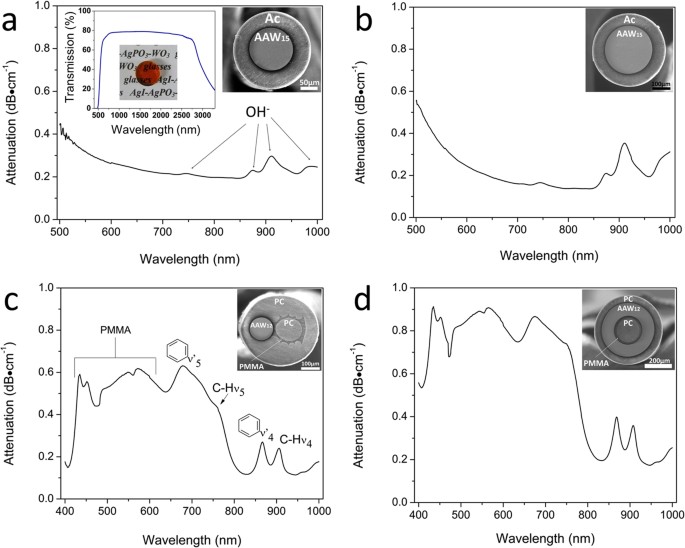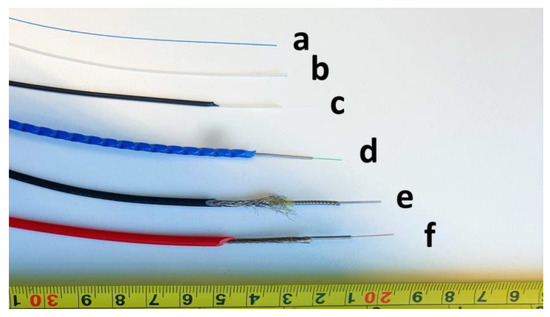Optimize Your Fibre Optic Performance: Comprehending Optical Fibre Diameter Analyser Modern Technology
The performance of fiber optic systems is seriously affected by the precision of their diameter, an aspect commonly overlooked in the pursuit of optimal signal stability. Comprehending the technology behind optical fiber diameter analysers reveals the intricate equilibrium between measurement precision and production quality. These tools not just boost compliance with market standards but also offer real-time insights that can preemptively attend to possible issues. The implications of their use expand past simple measurement; they can fundamentally change the landscape of fibre optic efficiency. What aspects should one consider to harness their full potential?
Importance of Optical Fibre Diameter
The diameter of optical fibre plays a vital function in figuring out the performance and efficiency of interaction systems. On the other hand, smaller sized sizes tend to support fewer settings, which can boost signal clearness and minimize crosstalk.

In addition, comprehending the size's ramifications can lead to set you back financial savings by minimizing the need for signal boosting and repeaters in considerable networks (optical fibre diameter analyser). Finally, the relevance of optical fibre size can not be overemphasized, as it directly affects the total efficiency and dependability of modern interaction systems
Just How Diameter Affects Signal Quality
Signal top quality in optical fibre systems hinges considerably on the size of the fiber. The diameter influences several crucial specifications, consisting of attenuation, data transfer, and modal diffusion. A smaller size can cause higher attenuation prices, leading to signal loss as light travels via the fiber. This depletion can compromise the honesty of the transmitted data, resulting in a decline in signal high quality, particularly over long ranges.
Conversely, bigger diameters usually permit improved light capture and lowered modal dispersion, enhancing signal clearness. In multimode fibers, a bigger core diameter can support numerous light modes, yet it may additionally present intermodal diffusion, which can deteriorate signal quality. For that reason, choosing the ideal fibre size is important for accomplishing the wanted performance in particular applications.
In addition, the interaction between the fibre size and the wavelength of the light utilized plays a crucial role in identifying the reliable transmission distance and total signal stability. Understanding how fibre size impacts signal high quality is essential for network developers and designers making every effort to enhance optical fibre systems for reliable, high-speed information transmission.
Introduction of Diameter Analyser Modern Technology
In lots of optical fibre manufacturing procedures, exact measurement of fibre diameter is vital for making certain consistent performance and quality (optical fibre diameter analyser). Diameter analysers are innovative instruments made to analyze the physical dimensions of optical fibers with high precision. They utilize innovative optical best site and laser innovations to measure the diameter, ovality, and concentricity of the fiber, therefore supplying vital information for top quality control
These analysers can operate in-line throughout the production process or as component of off-line screening methods. In-line systems make it possible for real-time tracking, enabling producers to adjust specifications quickly, thus preserving ideal manufacturing problems. Off-line analysers, on the various other hand, give extensive analyses of sets, making certain that any type of discrepancies from defined tolerances are determined and attended to.
Size analysers substantially add to the decrease of issues in optical fibers, enhancing overall product dependability. By consistently gauging vital parameters, these modern technologies promote conformity with market standards and specifications. As the need for high-performance optical fibres proceeds to increase, the role of size analysers becomes progressively vital in accomplishing the wanted top quality and performance standards in fibre optic systems.
Secret Functions of Fibre Size Analysers
Although various versions of fiber size analysers exist, they commonly share several crucial you can check here attributes that boost their performance and dependability. Among one of the most significant features is high-resolution measurement abilities, which guarantee precise diameter readings, essential for maintaining quality assurance in fiber production. Furthermore, many analysers integrate sophisticated optical sensing units made to identify minute variations in fibre diameter, thus supplying vital data for procedure optimization.
One more vital attribute is real-time surveillance, allowing operators to obtain instant comments on fiber diameter throughout the production procedure (optical fibre diameter analyser). This capacity facilitates quick changes and minimizes the possibility of defects. Several analysers also come equipped with straightforward user interfaces, making it possible for operators to quickly navigate via settings and data outputs
Furthermore, durable information storage space and analysis functionalities are vital for tracking historical performance fads and guaranteeing conformity with market standards. Some versions even supply connectivity alternatives for integration right into existing manufacturing control systems, enhancing overall operational performance. Compact and portable layouts enable for versatile implementation within production settings, making sure that quality assurance procedures are smooth and efficient. These functions collectively contribute to the effectiveness of fibre diameter analysers in optimizing fibre optic performance.
Best Practices for Fibre Optimization

First, routine calibration of optical fibre diameter analysers is crucial. This makes sure precise measurements and minimizes prospective disparities that can influence efficiency. Next, preserving a clean workplace is important; dirt and pollutants can result in indicate destruction.
Furthermore, it is necessary to pick fibers that fulfill particular application needs. This includes assessing factors such as attenuation, bandwidth, and ecological conditions. Proper setup strategies ought to likewise be abided by, including preventing sharp bends and extreme tension, which can endanger fiber integrity.
In addition, using sophisticated surveillance systems can promote real-time performance evaluations, enabling prompt identification of problems. Normal screening and maintenance should be carried out to make certain that fibers stay within optimal functional parameters.
Finally, training employees on the most recent fibre optimization modern technologies and approaches home will certainly boost their capability to implement reliable strategies. By following these finest practices, organizations can dramatically enhance the performance and life expectancy of their optical fibre systems, ensuring effective interaction and data transfer.
Final Thought
In final thought, the combination of optical fibre diameter analyser technology is crucial for maximizing fibre optic performance. By guaranteeing precise dimensions of fibre dimensions, these analysers substantially enhance signal top quality and decrease losses during data transmission. Normal calibration and upkeep of the analysers are crucial to promote optimal efficiency and conformity with sector requirements. Ultimately, the application of this innovation promotes boosted data transmission rates and strengthens signal stability, adding to the overall effectiveness of fiber optic systems.
Signal top quality in optical fibre systems hinges substantially on the diameter of the fibre.In many optical fibre manufacturing procedures, precise measurement of fibre diameter is crucial for making sure regular performance and quality. As the demand for high-performance optical fibres continues to increase, the function of diameter analysers ends up being significantly important in achieving the preferred quality and efficiency requirements in fiber optic systems.
These attributes jointly add to the efficiency of fibre size analysers in enhancing fiber optic efficiency.
In conclusion, the integration of optical fiber size analyser innovation is critical for making best use of fibre optic performance.